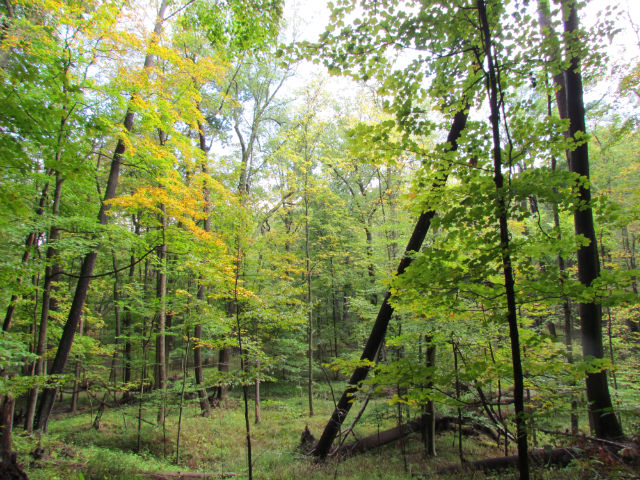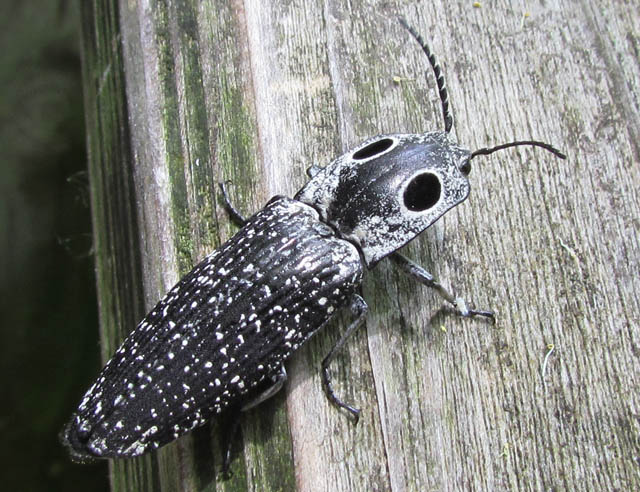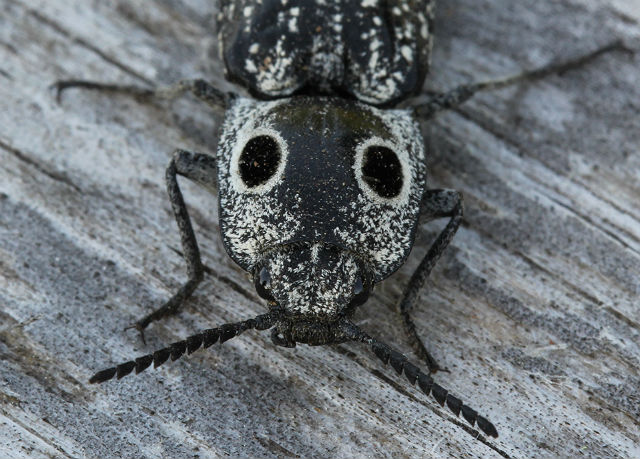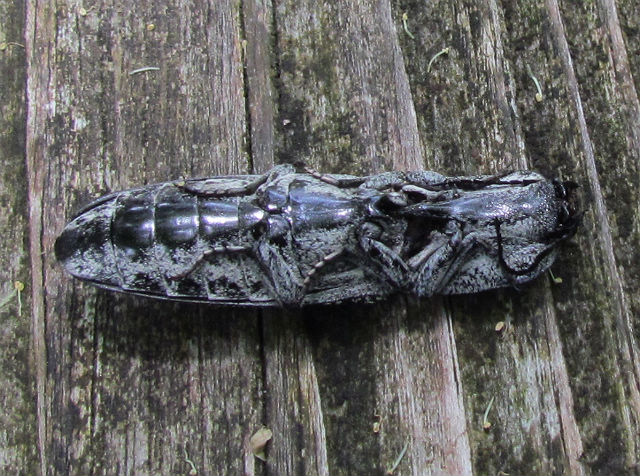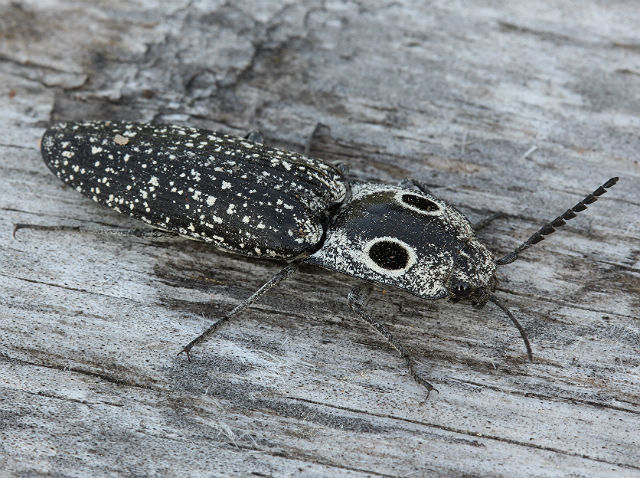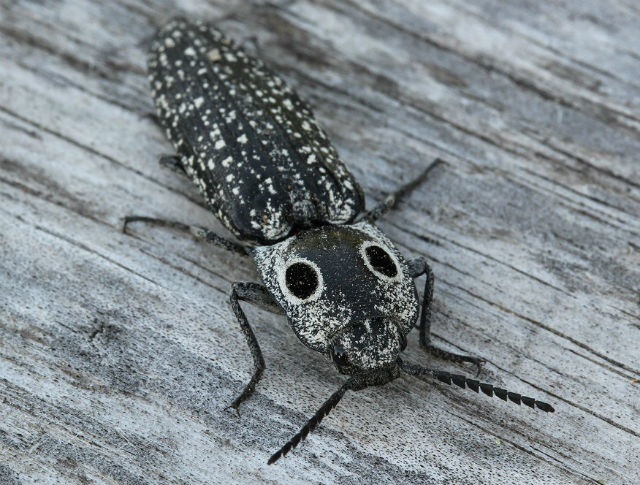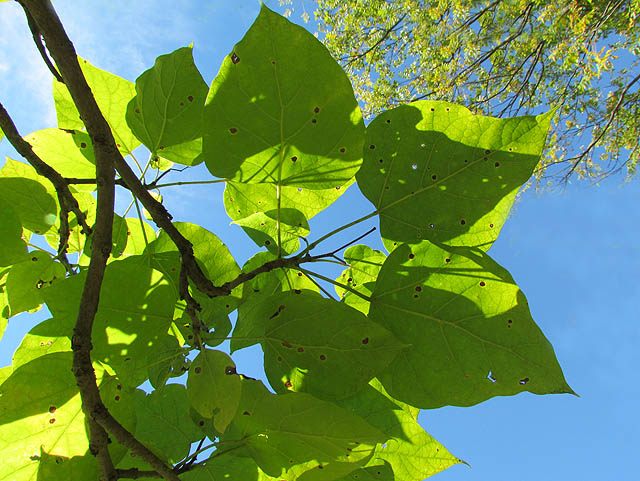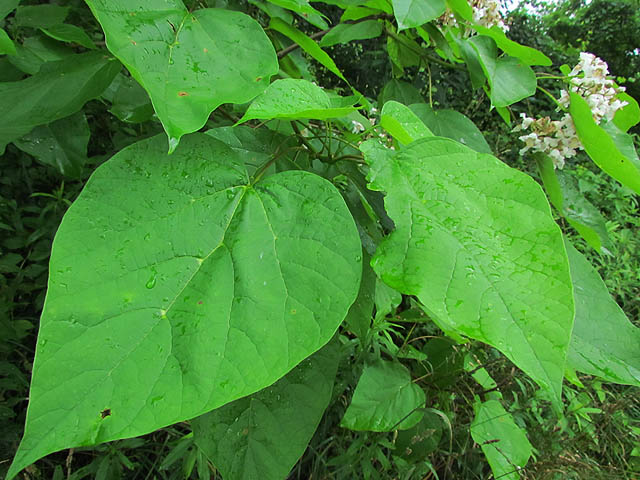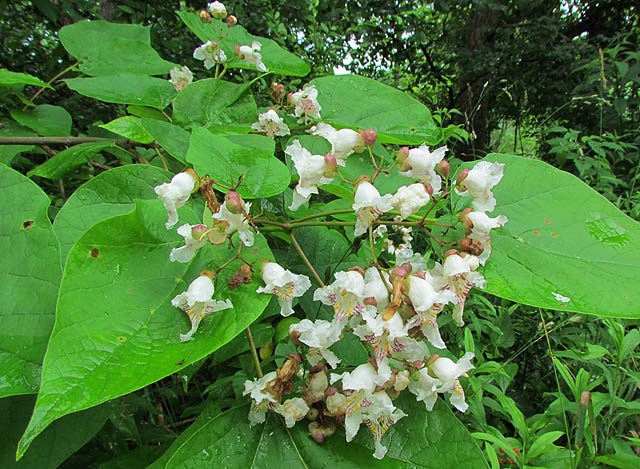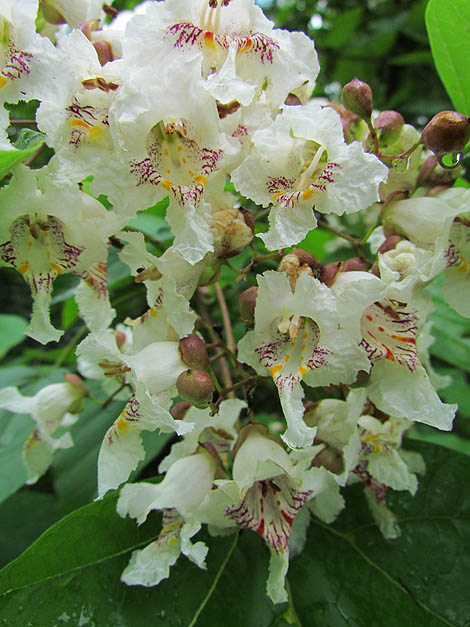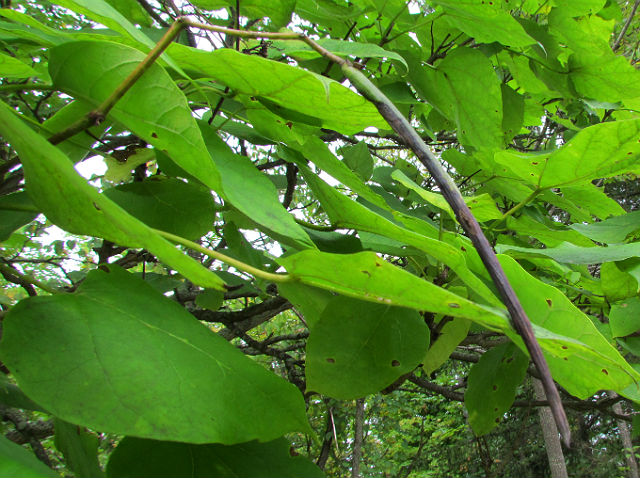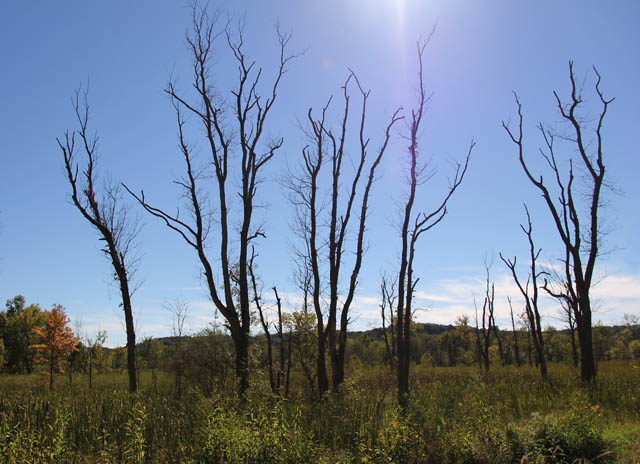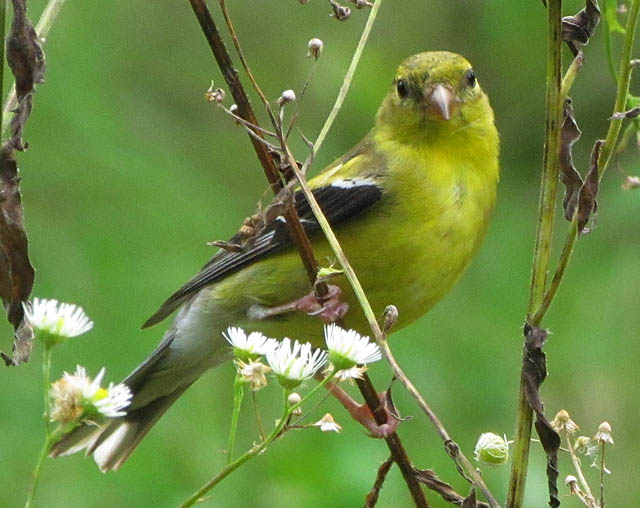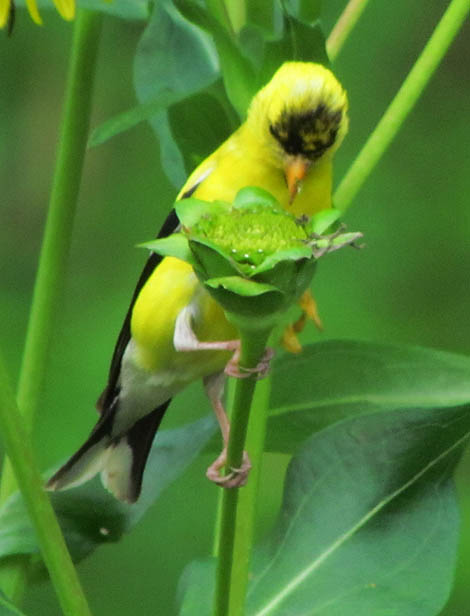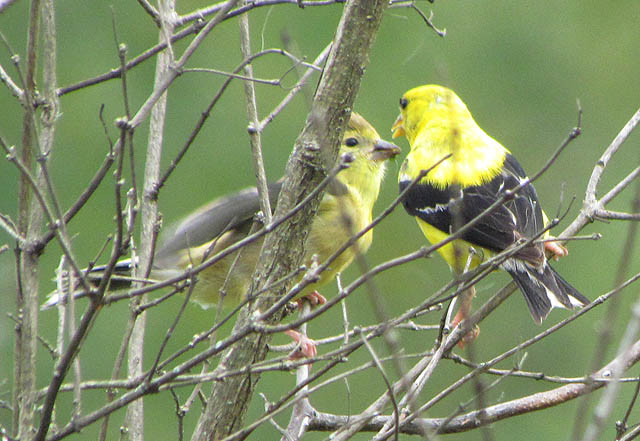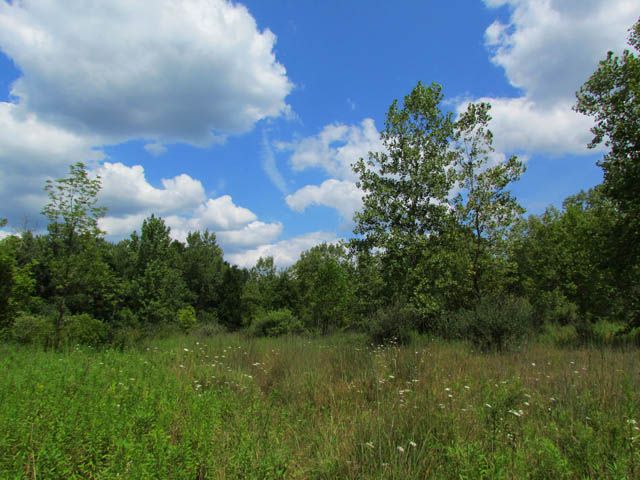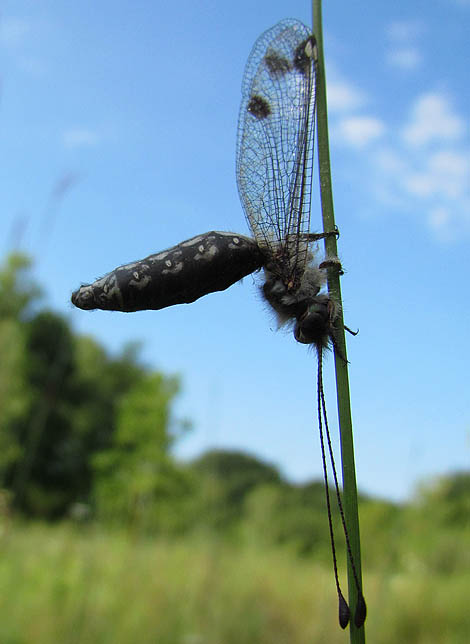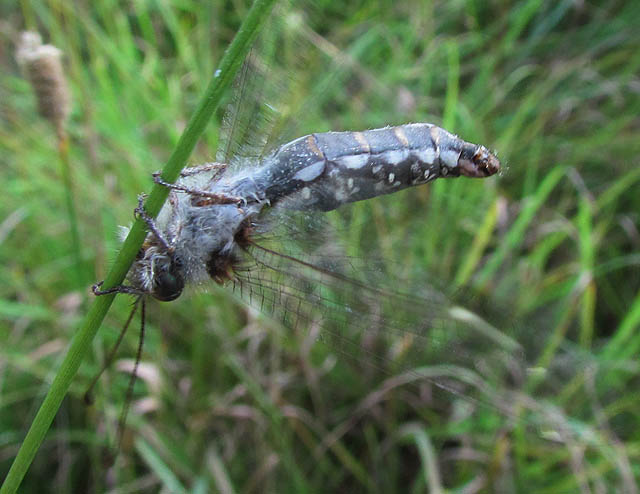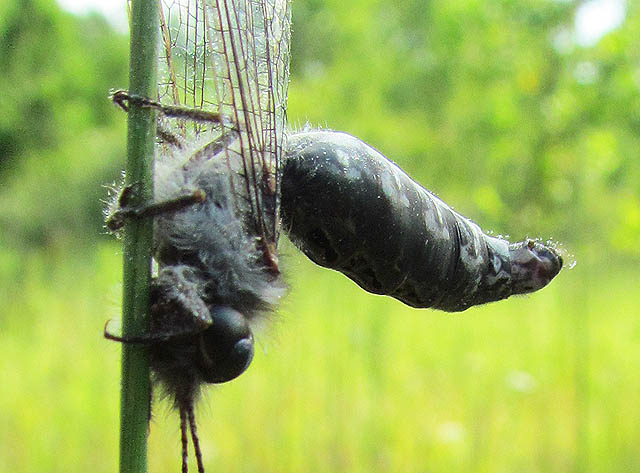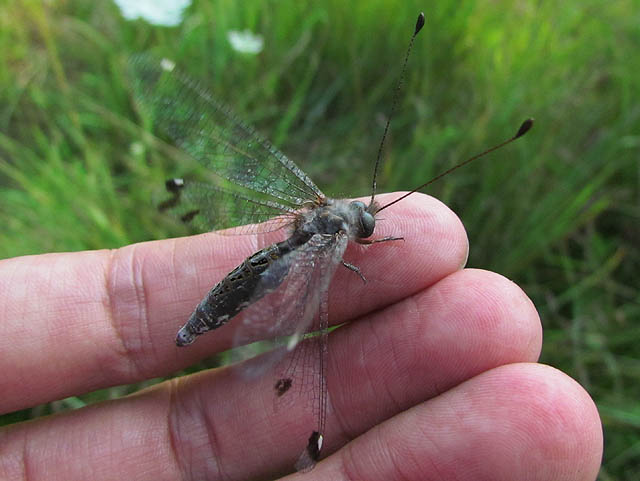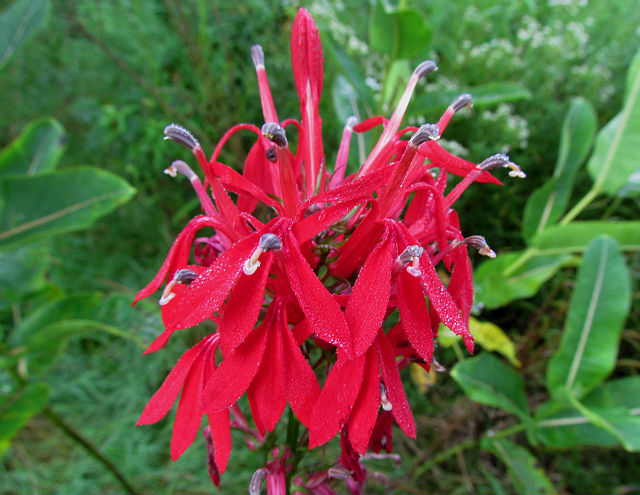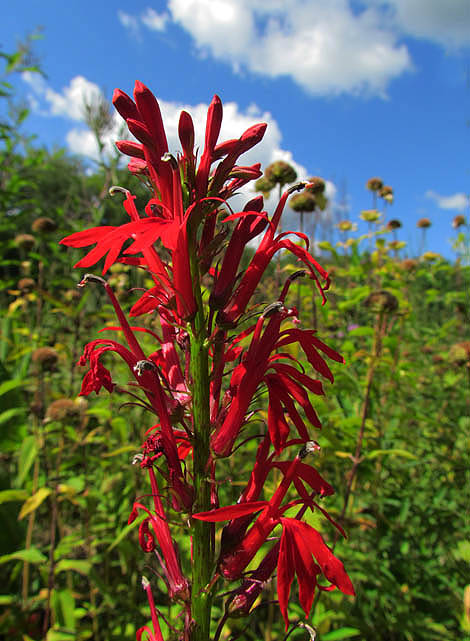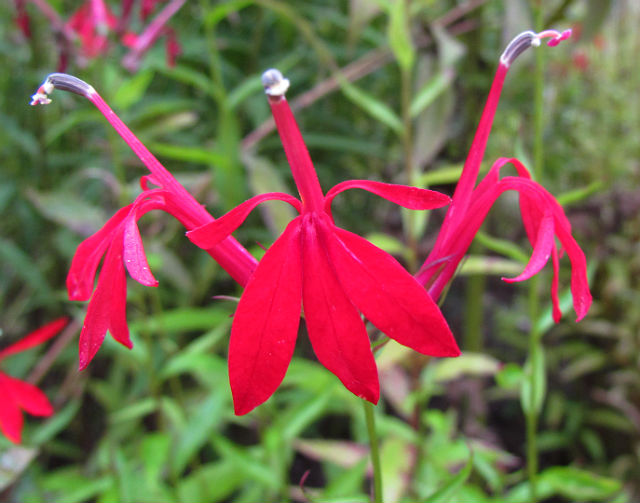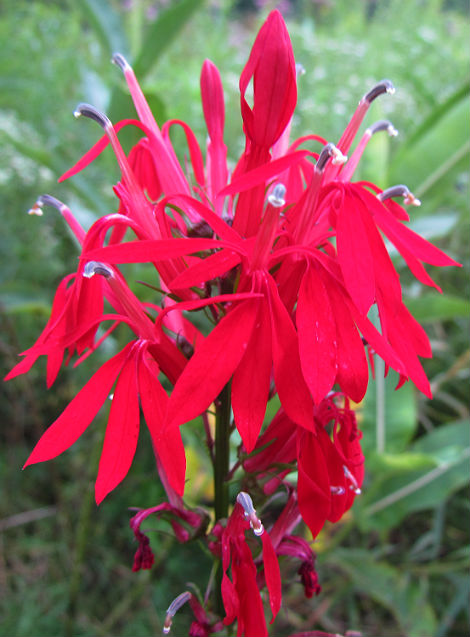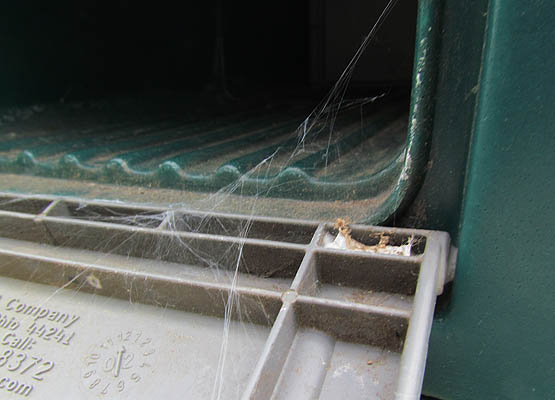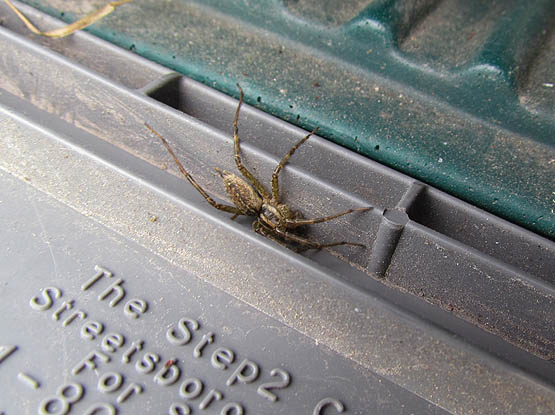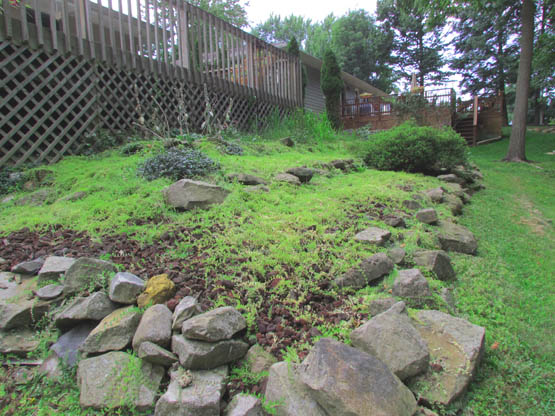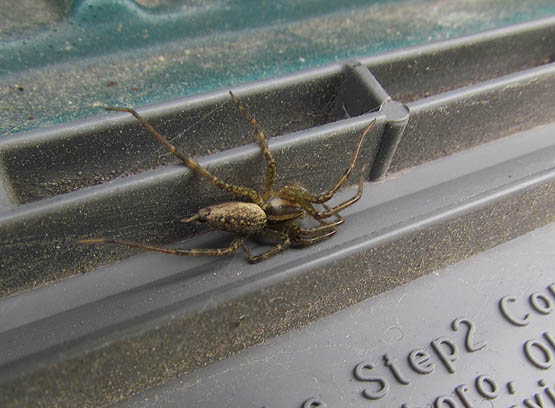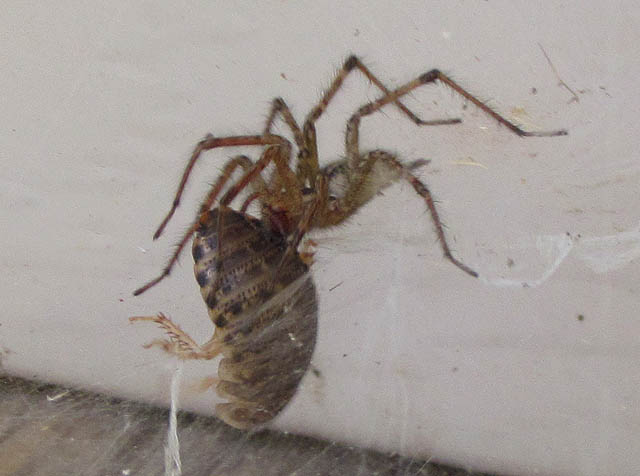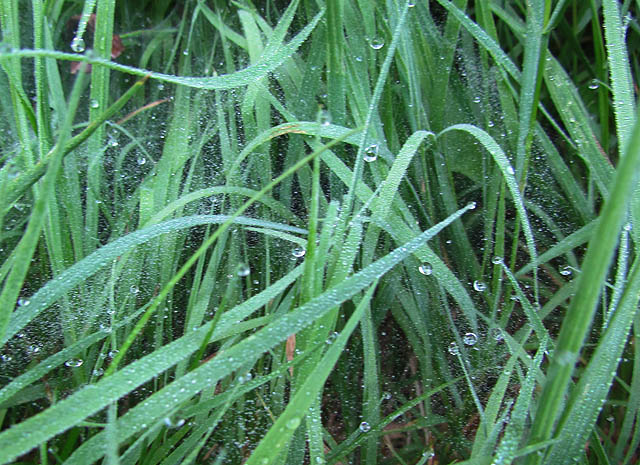As a kid, I’d read “bug books” and always wanted to see one of these fascinating insects “in person.” This year it finally happened.
At nearly two inches long, this formally attired gray, black and white insect is one of the largest members of the Click Beetle Family; the huge eyespots make it one of the most easily identified. These are “false eyes,” of course – likely an adaptation to scare off potential predators. The true eyes of the Eyed Click Beetle are much smaller and located at the bases of its sawtoothed antennae.
Click Beetles have a startling behavior that demonstrates how they got their primary name – as well as alternate nicknames of “snapping beetle,” “skipjack,” and “spring beetle.” When placed on its back (or when grabbed by a predator) a Click Beetle bends its front half backward and then straightens out suddenly with a snapping motion; this results in an audible click and launches the beetle several inches into the air.
Another defense is to tightly tuck in its legs and antennae and “play possum” until the predator loses interest. This one displayed the clicking behavior as well as playing dead.
These beetles eat nectar from flowers and are mainly nocturnal. They can be found throughout the eastern United States Beetles around woods with many hardwood trees, such as cherry, apple or oak and especially in areas with a lot of rotting logs.
I considered myself fortunate to finally experience this interesting insect up close for a little while before it went back into the wild.

